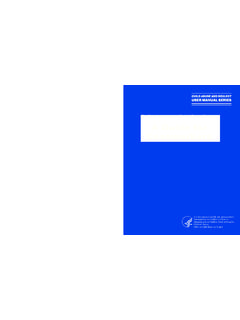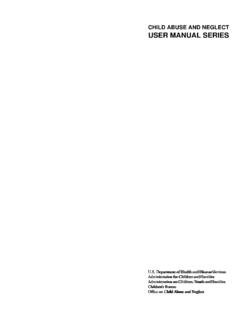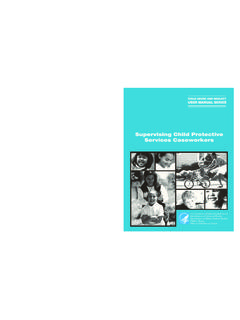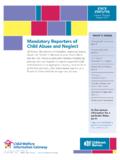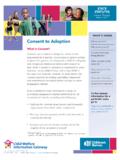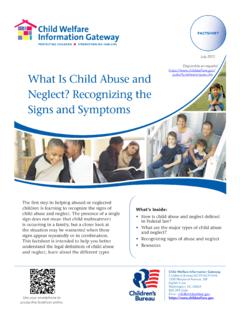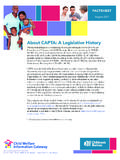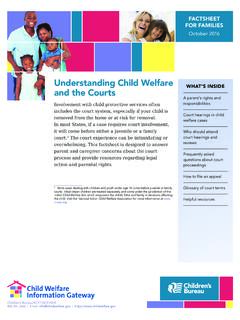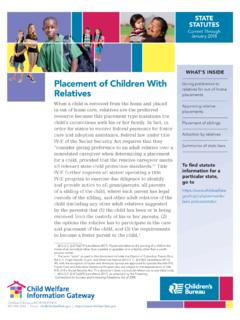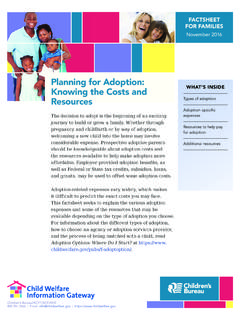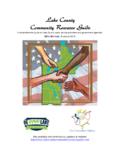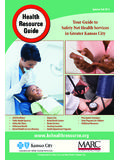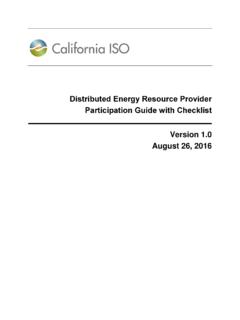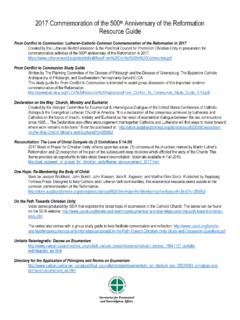Transcription of Building Community Building Hope: 2016 Prevention ...
1 Building Community Building HOPE2016 Prevention resource GUIDEWORKING WITH FAMILIESCOMMUNITY PARTNERSPROTECTING CHILDRENiBuilding Community , Building HopeDEPARTMENT OF HEALTH & HUMAN SERVICES ADMINISTRATION FOR CHILDREN AND FAMILIES Administration on Children, Youth and Families 330 C Street, Washington, 20201 Dear Colleagues:We are pleased to introduce the 2016 Prevention resource guide : Building Community , Building Hope. This year s resource guide reflects the theme of the Office on Child Abuse and Neglect s 20th National Conference on Child Abuse and Neglect Building Community , Building Hope.
2 This guide is a joint product of the Department of Health and Human Services Children s Bureau, its Child Welfare Information Gateway, and the FRIENDS National Center for Community -Based Child Abuse Prevention . This annual resource guide is one of the Children s Bureau s most anticipated publications, offering trusted information, strategies, and resources to help communities support and strengthen families and promote the well-being of children and youth. Its contents are informed by input from some of our National Child Abuse Prevention Partners as well as our colleagues on the Federal Interagency Work Group on Child Abuse and Neglect.
3 Child abuse and neglect is a national issue that affects us all. The consequences of child abuse and neglect ripple across the lifespan, negatively impacting a child s chances to succeed in school, work, and relationships. The Administration on Children, Youth and Families supports the promotion of meaningful and measurable results in social and emotional well-being, and we continue to support evidence-based and trauma-informed services and practices to achieve positive outcomes for the children, families, and communities we serve. The 2016 resource guide plays an important role in these efforts offering support to service providers as they work with parents, caregivers, and children to prevent child maltreatment and promote social and emotional well-being.
4 To do so, the resource guide focuses on protective factors that build on family strengths and promote optimal child and youth development. Information about protective factors is augmented with tools and strategies that help providers integrate the factors into Community programs and systems. Agencies, policymakers, advocates, service providers, and parents alike will find resources in this guide to help them promote these important elements within their families and communities. Effective early Prevention efforts are less costly to our nation and to individuals than trying to fix the adverse effects of child maltreatment.
5 We hope this resource guide is helpful to you in your efforts to prevent child abuse and promote well-being. We thank you for participating in this important effort and for the work you do each day to build promising futures for our nation s children and Colleagues:The Department of Health and Human Services Children s Bureau, Office on Child Abuse and Neglect, Child Welfare Information Gateway, and the FRIENDS National Center for Community - BasedChild Abuse Prevention are pleased to send you a copy of the latest Prevention resource guide .
6 The2016 Prevention ResourceGuide: Building Community , Building Hopereflects the theme of the 20th National Conference on Child Abuse Neglect, which is being hosted by the Office on Child Abuse and Neglectfrom August 31 to September 2, 2016, in Washington, resource guide embodies the partnership that exists among national organizations, Federalpartners, and parents who are committed to preventing child maltreatment and promoting well- beingwithinfamilies and communities. The guide is intended to support service providers in their work withparents, caregivers, and their children to strengthen families and prevent child in preparation for National Child Abuse Prevention Month in April 2016, the guide suppliesinformation you can use year sDifferentin ThisYear sResource guide ?
7 The 2016 Prevention resource guide has been refreshed with a new name, theme, and design. Chapter 2, Working With Families Using the Protective Factors, contains two new vignettes to helpproviders put the protective factors into practice, examples of how States are implementing protective factors in their programs, and questions to explore with parents. Chapter 3, Using Protective Factors as a Framework for Your Community Partnership, continues to provide information on how to successfully work with Community partners, including new tips forworking with immigrant/refugee families.
8 Chapter 4, Protecting Children, contains updatedchild maltreatment statistics as well asinformation on how to work with parents who have a history of trauma; how to support newAmericans, as well as immigrant and refugee families; and information on human trafficking ofchildren. Chapter 5, Tip Sheets for Parents and Caregivers, contains two new tip sheets in English and Spanish that can be distributed to parents and caregivers:o Building Resilience in Children and Youtho Parenting After Domestic Violence The 2016 Prevention resource guide and theactivity calendars are also available for download from thePreventing Child Abuse and Neglect section of the Child Welfare Information Gateway website I encourage you to share this URL with L pez, Commissioner Administration on Children.
9 Youth and Families Administration for Children and Families Department of Health and Human ServicesThis page intentionally left Community , Building HopeTable of ContentsAbout the resource guide ..1 Chapter 1: Approaches to Building Community and Hope ..3 Protective Factors ..3 Implementing a Protective Factors Approach ..7 Chapter 2: Working With Families Using the Protective Factors ..11 Nurturing and Attachment ..11 Knowledge of Parenting and Child Development ..13 Parental Resilience ..15 Social Connections ..17 Concrete Support for Families.
10 19 Social and Emotional Competence of Children ..21 Questions to Ask to Explore Protective Factors With Caregivers ..23 Protective Factors in Practice ..25 Chapter 3: Using Protective Factors as a Framework for Your Community Partnership ..27 Working Successfully With Community Partners ..27 Tips for Working With Specific Groups ..29 Building Community and Hope Through Media ..33 Chapter 4: Protecting Children ..36 Understanding Child Abuse and Neglect ..36 Working With Parents Who Have a History of Trauma ..41 Supporting Immigrant and Refugee Families.
